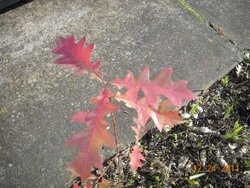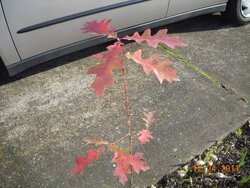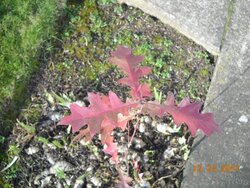I didn't think "Wood ID" was going to fly yet on this sapling. I have this sapling that sprung up in my flower bed this year. I want to transplant it to my sister's property, where I store my future wood, because they have 7 acres of pasture and trees. In the past 15 years, about half my wood has come from their property from blow downs, standing deads, and a couple of trees we "pruned" There is a standing dead honey locust (I think) in their yard, I'll get next year, maybe 3/4 cord give or take.
Anyway, what kind of tree sapling is this? It's about 3 feet tall, and lost most of it's leaves. I'm flat out guessing, but is this a red oak?
Oregon White Oak is the native oak around here, and the leaf looks different than the Oregon White Oak.
As a second question, any tricks on transplanting a sapling? I've not done it before.
Oregon Bigfoot
Anyway, what kind of tree sapling is this? It's about 3 feet tall, and lost most of it's leaves. I'm flat out guessing, but is this a red oak?
Oregon White Oak is the native oak around here, and the leaf looks different than the Oregon White Oak.
As a second question, any tricks on transplanting a sapling? I've not done it before.
Oregon Bigfoot






